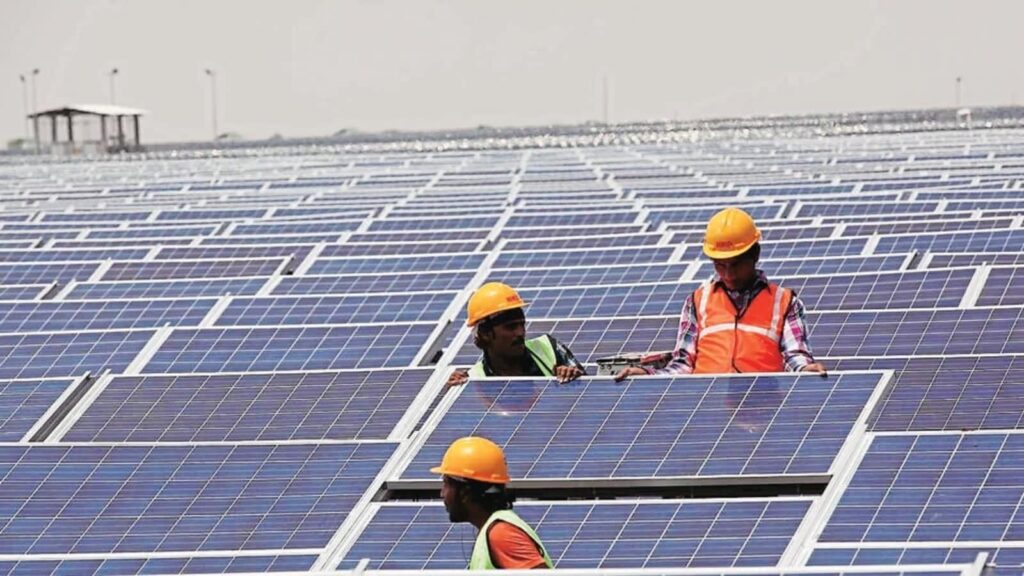India, a rapidly growing economy, is witnessing many transitions. One of them is more visible in its impact — the big targets that India has set for a greener energy system. Another transition, namely rapid urbanisation, presents many opportunities for building sustainable cities. Less visible, though, are the opportunities that lie in improving the life chances and livelihoods of the hundreds of millions of people still living in rural areas.
Before the Covid-19 pandemic, 25-30 people were reportedly migrating to India’s cities from rural areas every minute. After the lockdown, an estimated 11.4 million migrant workers returned home. The pandemic is over, and our cities are growing once again. Estimates suggest that 600 million people, or 40% of the population, will be living in India’s cities by 2030. But that still leaves the majority in rural areas; this will remain a critical political priority for the foreseeable future. Can the clean energy transition boost economic opportunities in rural areas?
Until the big push for household electrification in recent years under the Saubhagya scheme, unelectrified villages and households had to rely on polluting fuels for lighting. With nearly 100% household electrification now, the patterns of energy demand will shift in different ways. On the one hand, electricity demand at home will rise from a very low base. On the other, small-scale enterprises in rural areas will also need increased energy to boost productivity. This is where the role of distributed renewable energy (DRE) becomes more palpable.
Consider this: Kuni Dehury from Keonjhar, Odisha, has trained more than 500 women to become silk reelers using solar-powered silk reeling machines. The fine cloth has historically been spun by rural women reeling the silk yarn on their thighs, resulting in arduous physical labour and long-term physical damage. Solar-powered silk-reeling machines boost productivity by at least two times, giving women silk-reelers dignity of labour and the opportunity to become micro entrepreneurs such as Dehury (Prime Minister Narendra Modi mentioned this remarkable woman in his Mann Ki Baat episode in October 2022). What feels like a small remote innovation translates into a $30 million market opportunity just through silk reeling machines.
Now consider this: Solar-powered hydroponic systems that can grow fodder with minimal water is another $1.8 billion market opportunity. Also, give a thought to a former rickshaw puller who invented food processors running on solar-powered efficient motors and has managed to sell nearly a thousand units. Or think about solar food dryers that can impact 3.4 million livelihoods by letting farmers sell their dried mango, rose petals, or vegetables to B2B procurers at higher prices rather than losing revenue when the crops rot in the absence of cold storages.
Put all of this together and India has a market opportunity of nearly $50 billion to use distributed renewables for livelihoods in rural areas. These include, but are not limited to, food processing, milk chilling, yarn, fabric and garment manufacturing, solar irrigation, cold storages, milling units and dryers. That is not all. The same market has the potential to support 37 million livelihoods and thousands of entrepreneurs and micro entrepreneurs in rural India.
To put this idea to the test, the Council on Energy, Environment and Water (CEEW) and pioneering social enterprise incubator, Villgro Innovations Foundation, started a programme called ‘Powering Livelihoods’ in 2020. In under three years, the programme has managed to support 11,000+ technology deployments, impacting 17,000+ livelihoods, with 72% of the beneficiaries being women.
So, how do we convert this less-recognised opportunity into a more visible and dramatic energy (and economic) transition?
First, we must support entrepreneurs. Many of the innovators of DRE-based products struggle to convert their technological innovations into marketable products. These technologies can be commercialised through better capital support to manufacturers and affordable credit to end-users. The financial support will help entrepreneurs design their innovations to be customer-friendly, targeted at different types of users, and advertise their products online.
Second, we must boost the enterprise and empower the end-user. Innovative entrepreneurs are not enough. They need the backbone of a functioning enterprise, access to working capital, training for marketing, a workforce for after-sales services, and the ability to scale up production as demand surges. Further, for end-users, stakeholders must ensure better financing, and strengthen backward and forward market linkages to ensure increased income and demand for products produced through these technologies.
And third, we must enable the ecosystem. DRE-influenced livelihoods aren’t mere anecdotes, but they are not mass-market products either. The policy ecosystem can enable this revolution at multiple levels. States such as Bihar and Uttar Pradesh, with their vast rural livelihood missions, have started experimenting with how distributed renewables can be an important component of rural development. At the national level, India is the first country with a policy on distributed renewables for livelihoods. Internationally, the recently published report by the UN Secretary General’s High-Level Advisory Board on Effective Multilateralism recognised the need for a global DRE platform to scale up these technologies and lower costs.
None of this will be easy. But we now have extensive analysis, sufficient examples, scale, and budding political will to ensure that entrepreneurs, enterprises and the ecosystem can indeed tap into the vast potential of jobs, growth and sustainability for distributed renewable-based livelihoods — and bring the energy transition closer to people and communities.
Arunabha Ghosh is CEO, Council on Energy, Environment and Water. The views expressed are personal

